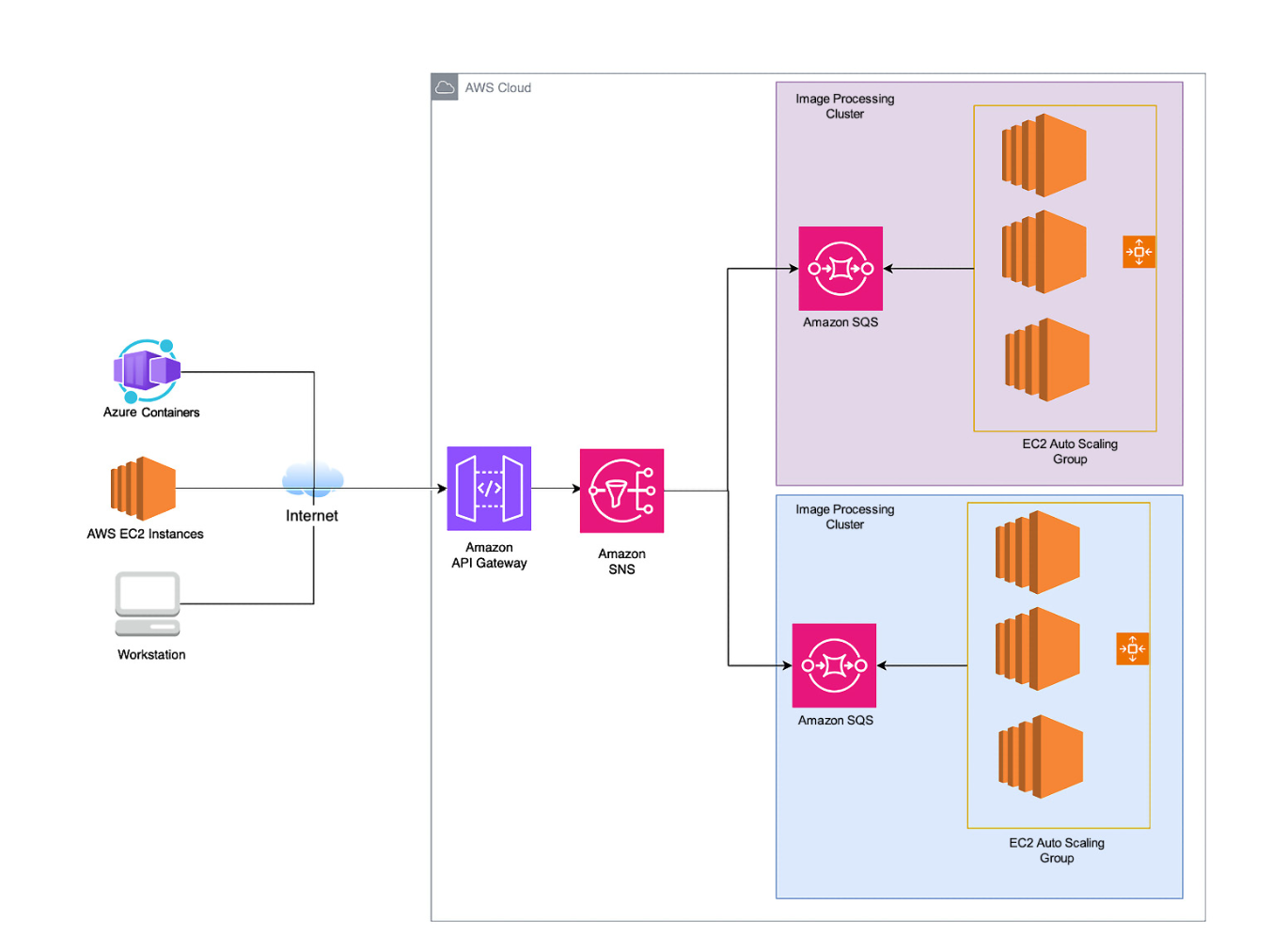AWS Applications
Here is some techniques when implementing services in AWS
1. Principles:
-
Step 1: Requirement gathering
- Business requirements.
- Functional requirements.
- Non-functional requirements.
- Technical requirements.
- Data requirements.
- Integration requirements.
- Security & Compliance requirements.
- Financial requirements.
-
Step 2: Choosing an architecture pattern
- Web application.
- Data proccessing pipeline.
- Serverless architecture.
- Microservice.
- Event-driven architecture.
- Domain: e-commerce, media and entertainment, healthcare, financial service,..
- Every architecture pattern has a strengths, weaknesses, trade-offs.
-
Step 3: Selecting a service
- You can choose AWS services.
- Or leverage third-party services.
-
Step 4: Diagramming the service.
-
Step 5: Exploring Well-Architecture framework.
-
Step 6: Using AWS Console, AWS CLI, AWS SDK, IaC (CloudFormation & Terraform)…
- AWS Console: convenient with create a EC2, but drawbacks when you need to create 100 - 1000 EC2s.
- AWS CLI: Using in your terminal, required AWS_ACCESS_KEY_ID, AWS_SECRET_ACCESS_KEY, AWS_DEFAULT_REGION.
$ aws <command> <subcommand> [options and parameters]
- AWS SDK: Golang, NodeJS, Python... provide abstract high-level interface for you to make HTTP/HTTPS requests.
- IaC: CloudFormation and Terraform.
- CloudFormation (.yaml)
Resources:
NewEC2Instance:
Type: AWS::EC2::Instance
Properties:
ImageId: "ami-0c101f26f147fa7fd"
- Terraform
provider "aws" {
region = "us-east-1"
}
resource "aws_instance" "ec2" {
ami = "ami-0c101f26f147fa7fd"
instance_type = "t2.micro"
}
2. Host a personal website:
2.1. Architecture:
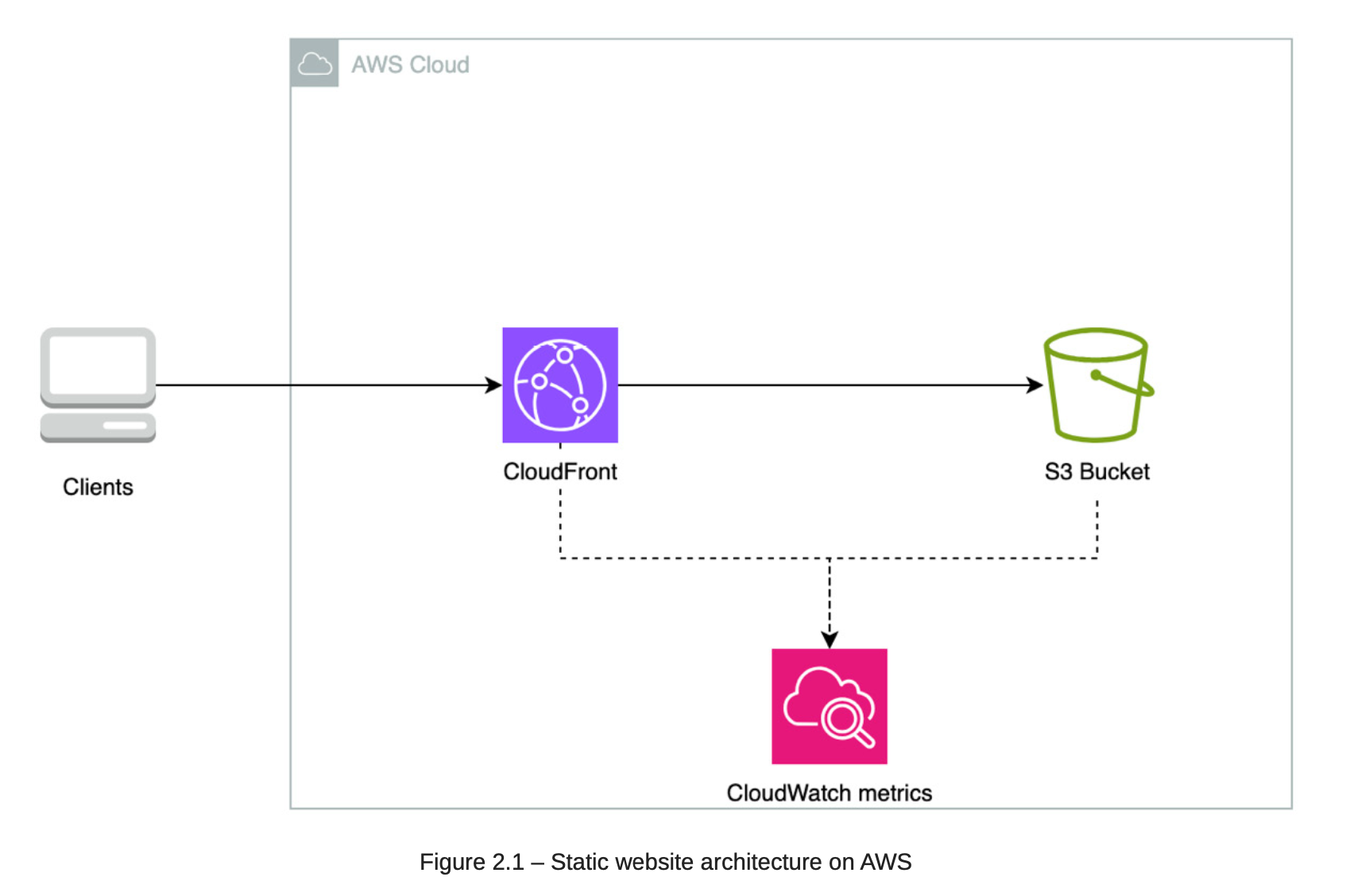
2.2. AWS Serices
-
S3:
- Pros: Versioning, easy to host static website and assets.
- Cons: S3 is a regional service.
-
CloudFront:
- Pros: Globally access.
-
Cloud Watch:
- Monitor both S3 and CloudFront.
2.3. How to implement:
-
Step 1: Upload source code to S3.
-
Step 2: Come to AWS CloundFront -> Config policy point to S3.
{
"Version": "2008-10-17",
"Id": "PolicyForCloudFrontPrivateContent",
"Statement": [
{
"Sid": "AllowCloudFrontServicePrincipal",
"Effect": "Allow",
"Principal": {
"Service": "cloudfront.amazonaws.com"
},
"Action": "s3:GetObject",
"Resource": "arn:aws:s3:::cloudprojectwebsitebucket/*",
"Condition": {
"StringEquals": {
"AWS:SourceArn": "arn:aws:cloudfront::111111111111:distribution/E33NUQ32Z0XQZB"
}
}
}
]
}
-
Step 3: Go to CloudWatch to monitor the website: 4xx Error Rate, 5xx Error Rate,…
-
Step 4: Buy DNS Name in Route 53 -> Add custom domain name in AWS Cloud Front.
-
Step 5: Add security to the website.
-
Add AWS WAF (Firebase)
-
Add Shield (DDoS)
-
Add logging in CloudFront.
-
2.4. Final Architecture:
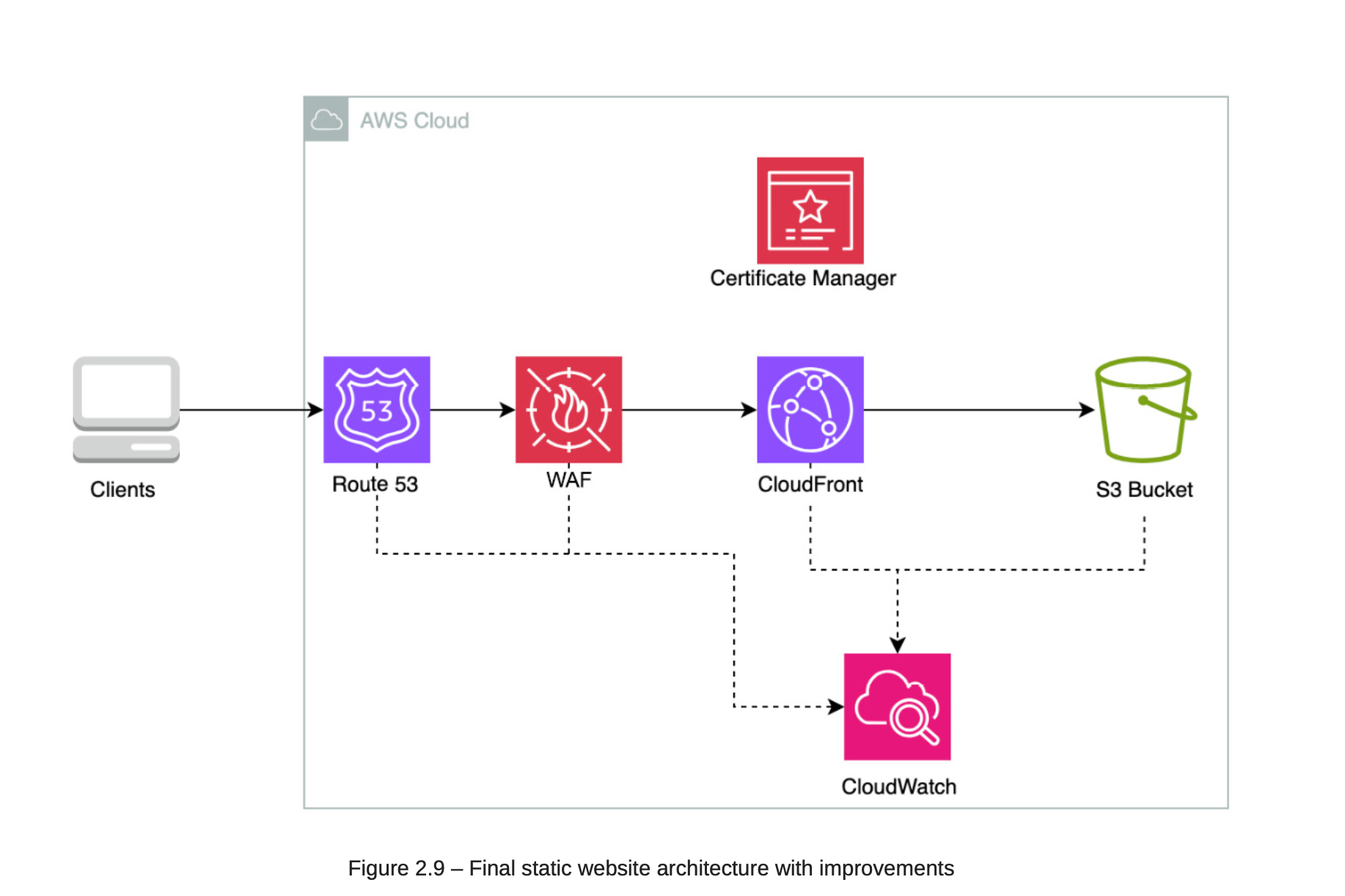
3. Building a Recipe-Sharing (Server Application)
3.1. Architeture
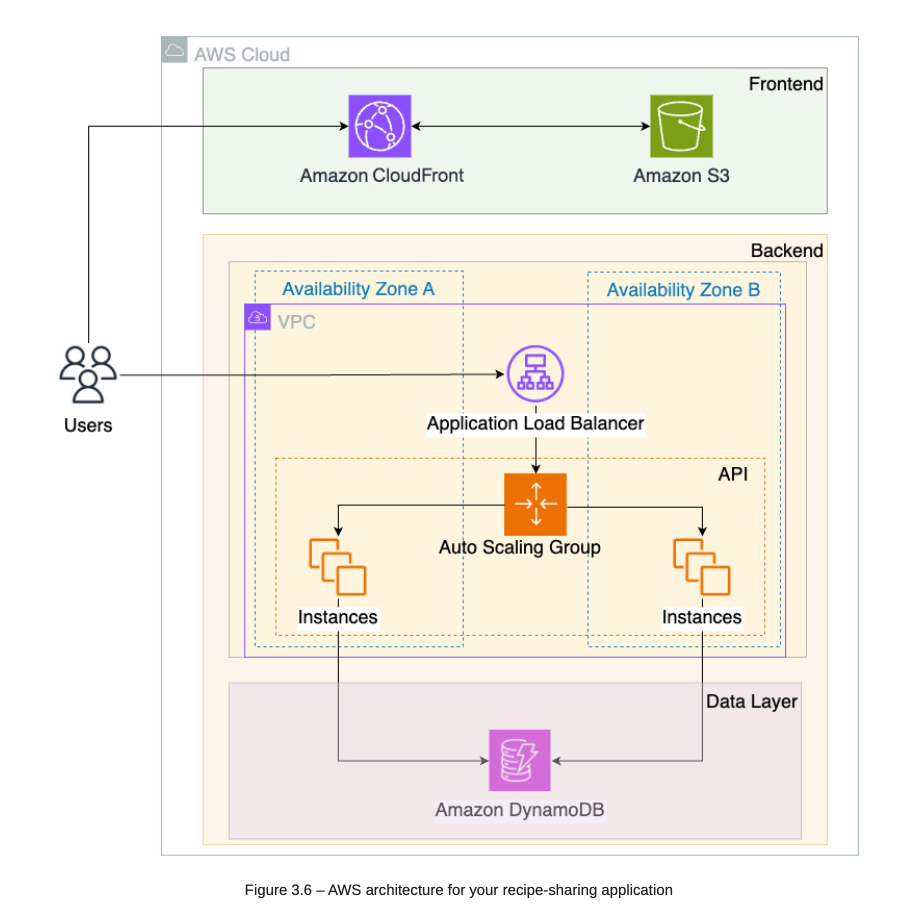
3.2. AWS Service:
Frontend Layer:
-
AWS S3: to store build frontend
-
AWS Cloudfront: Distribute frontend over the world
Backend Layer:
-
AWS VPC: Isolate network to only allow frontend CDN -> call backend EC2.
-
EC2: API Server.
-
Load Balancer: Load balancing traffic to multiple EC2s.
Database Layer
- DynamoDB: Database layer to create/update/delete data.
Deployment Layer
-
CloudFormation: use to deploy code.
-
Route 53: to buy DNS.
-
Certificate Manager: to buy SSL for the domain.
3.3. Future Work:
-
Auto Scaling: Infrastructure.
-
CI/CD: Implement AWS CodeCommit.
-
Authentication: Using OAuth of AWS Cognito.
-
Logging, Monitoring: CloudWatch Logs.
-
Caching: DynamoDB Accelerator (DAX), Redis or Memcached.
3.4. Final Architecture:
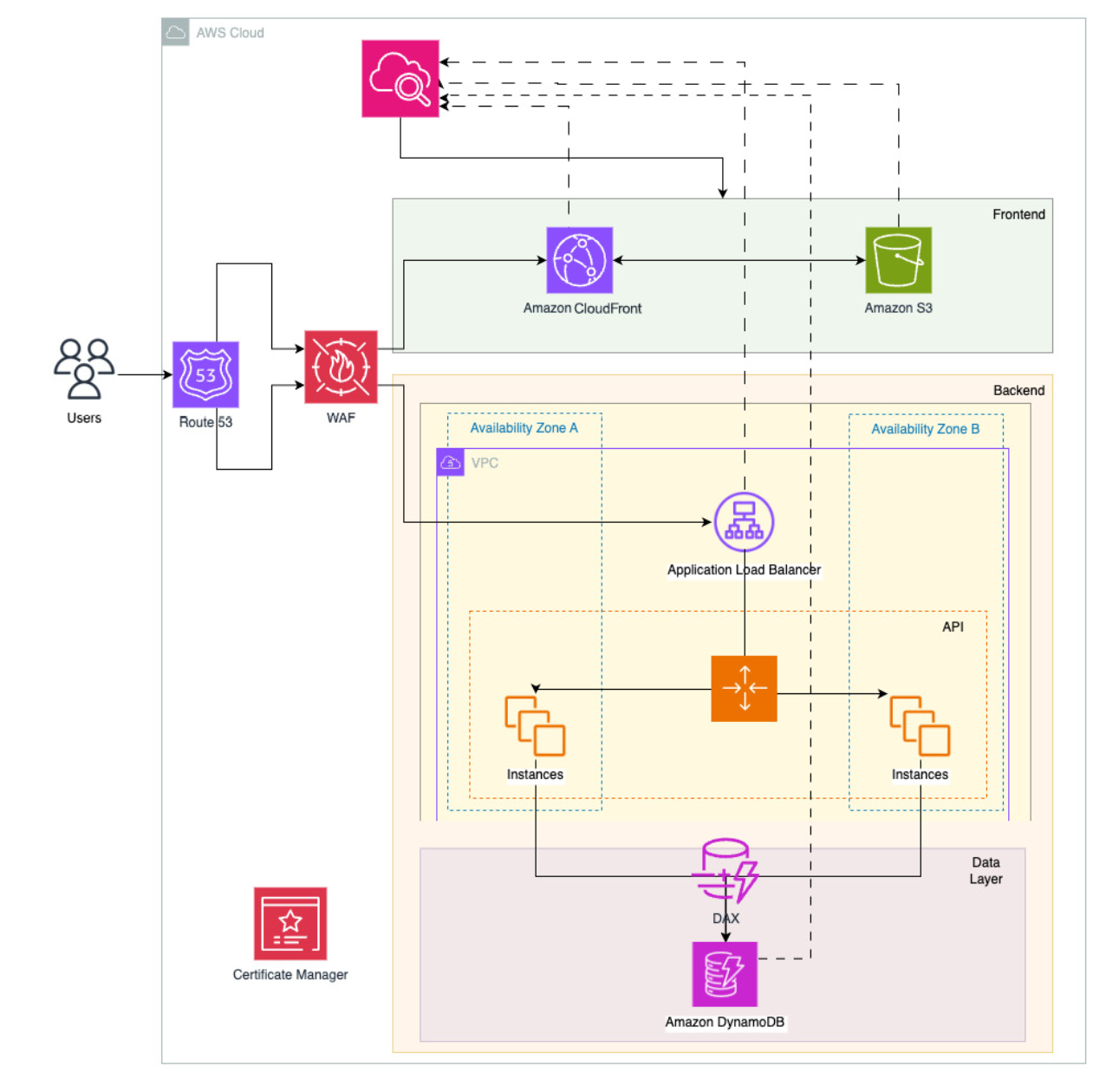
4. Building a Recipe-Sharing (Serverless)
4.1. Archiecture

4.2. Choosing service
-
S3: Store frontend build.
-
CDN: Serve frontend build.
-
CloudFormation: Deployment.
-
AWS Cognito: Use to authenticate, authorization with AWS.
-
AWS Lambda: upload function and execute.
import json
import boto3
dynamodb = boto3.resource('dynamodb')
table = dynamodb.Table('recipes')
def lambda_handler(event, context):
try:
recipe_id = event['pathParameters']['recipe_id']
response = table.delete_item(Key = {
'id': recipe_id
})
return {
"statusCode": 200,
"body": json.dumps({
"message": "Recipe deleted successfully"
})
}
except Exception as e:
return {
"statusCode": 500,
"body": json.dumps({
"message": f "Error deleting recipe: {e}"
})
}
- API Gateway: Route API to services and functions.
4.3. Future Work:
- Store user profile
4.4. Final Architecture:
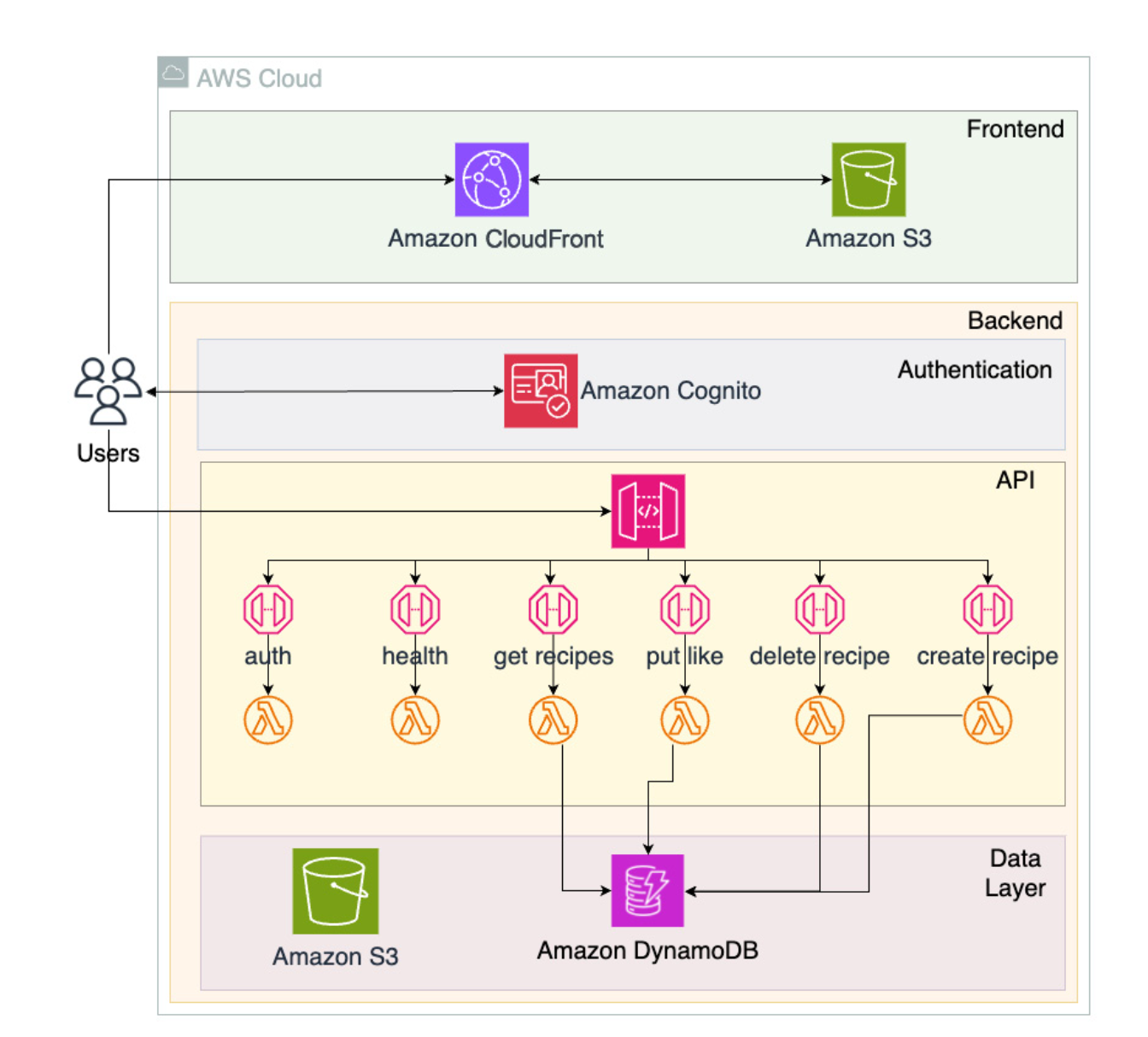
5. Build Image Analyzer to Detect Photo Friendliness
5.1. Architecture:
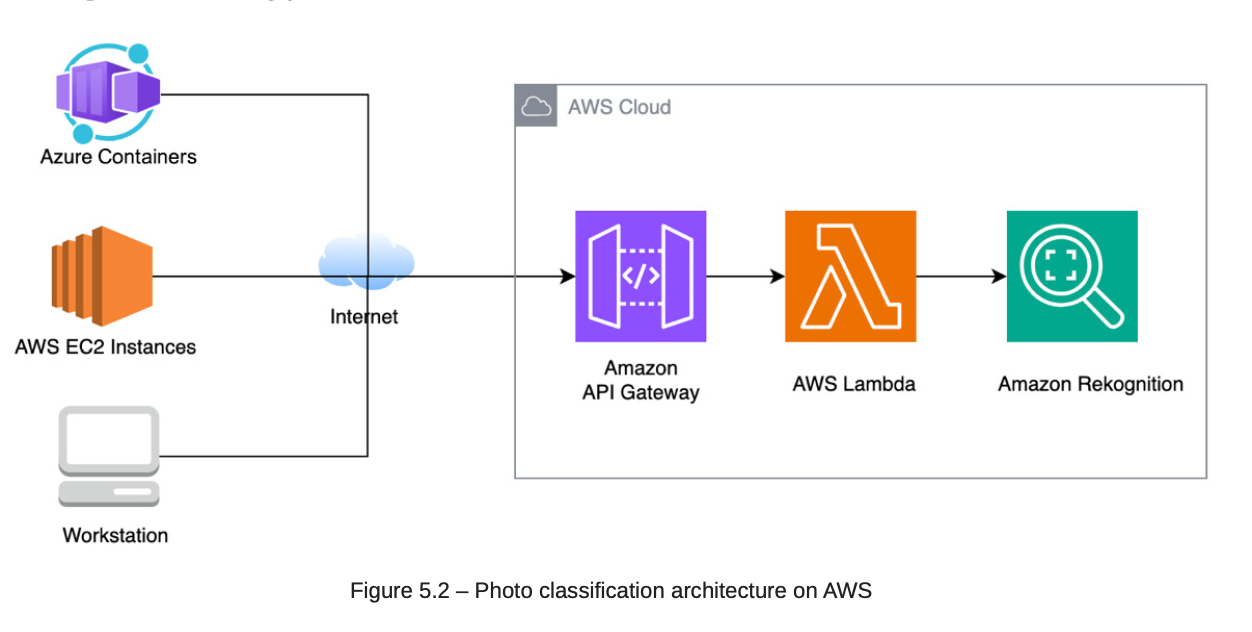
5.2. Choosing service:
-
AWS Rekognition: ML services of AWS.
-
API Gateway: Route traffic from client to AWS Lambda.
-
AWS Lambda: use to execute the function to AWS Rekognition.
-
Terraform: use to define infrastructure.
5.3. Deployment with Terraform
- lambda.tf
data "aws_iam_policy"
"rekognition_policy" {
arn = "arn:aws:iam::aws:policy/AmazonRekognitionReadOnlyAccess"
}
resource "aws_iam_role_policy_attachment"
"codedeploy_service_role_policy_attach" {
role = aws_iam_role.lambda_role.name
policy_arn = "${data.aws_iam_policy.rekognition_policy.arn}"
}
data "archive_file"
"zip_the_python_code" {
type = "zip"
source_file = "${path.module}/python/rekognition.py"
output_path = "${path.module}/python/rekognition.zip"
}
resource "aws_lambda_function"
"terraform_lambda_func" {
filename = "${path.module}/python/rekognition.zip"
function_name = "Detection_Lambda_Function"
role = aws_iam_role.lambda_role.arn
handler = "rekognition.lambda_handler"
runtime = "python3.8"
depends_on = [aws_iam_role_policy_attachment.attach_iam_policy_to_iam_role]
}
- apigw.tf
resource "aws_api_gateway_method"
"proxy" {
rest_api_id = aws_api_gateway_rest_api.my_api.id
resource_id = aws_api_gateway_resource.root.id
http_method = "POST"
authorization = "NONE"
}
resource "aws_api_gateway_integration"
"lambda_integration" {
rest_api_id = aws_api_gateway_rest_api.my_api.id
resource_id = aws_api_gateway_resource.root.id
http_method = aws_api_gateway_method.proxy.http_method
integration_http_method = "POST"
type = "AWS"
uri = aws_lambda_function.terraform_lambda_func.invoke_arn
}
resource "aws_api_gateway_method_response"
"proxy" {
rest_api_id = aws_api_gateway_rest_api.my_api.id
resource_id = aws_api_gateway_resource.root.id
http_method = aws_api_gateway_method.proxy.http_method
status_code = "200"
}
resource "aws_api_gateway_integration_response"
"proxy" {
rest_api_id = aws_api_gateway_rest_api.my_api.id
resource_id = aws_api_gateway_resource.root.id
http_method = aws_api_gateway_method.proxy.http_method
status_code = aws_api_gateway_method_response.proxy.status_code
depends_on = [
aws_api_gateway_method.proxy,
aws_api_gateway_integration.lambda_integration
]
}
- Run the code
terraform apply
6. Build Content Translation Pipeline
6.1. Architecture
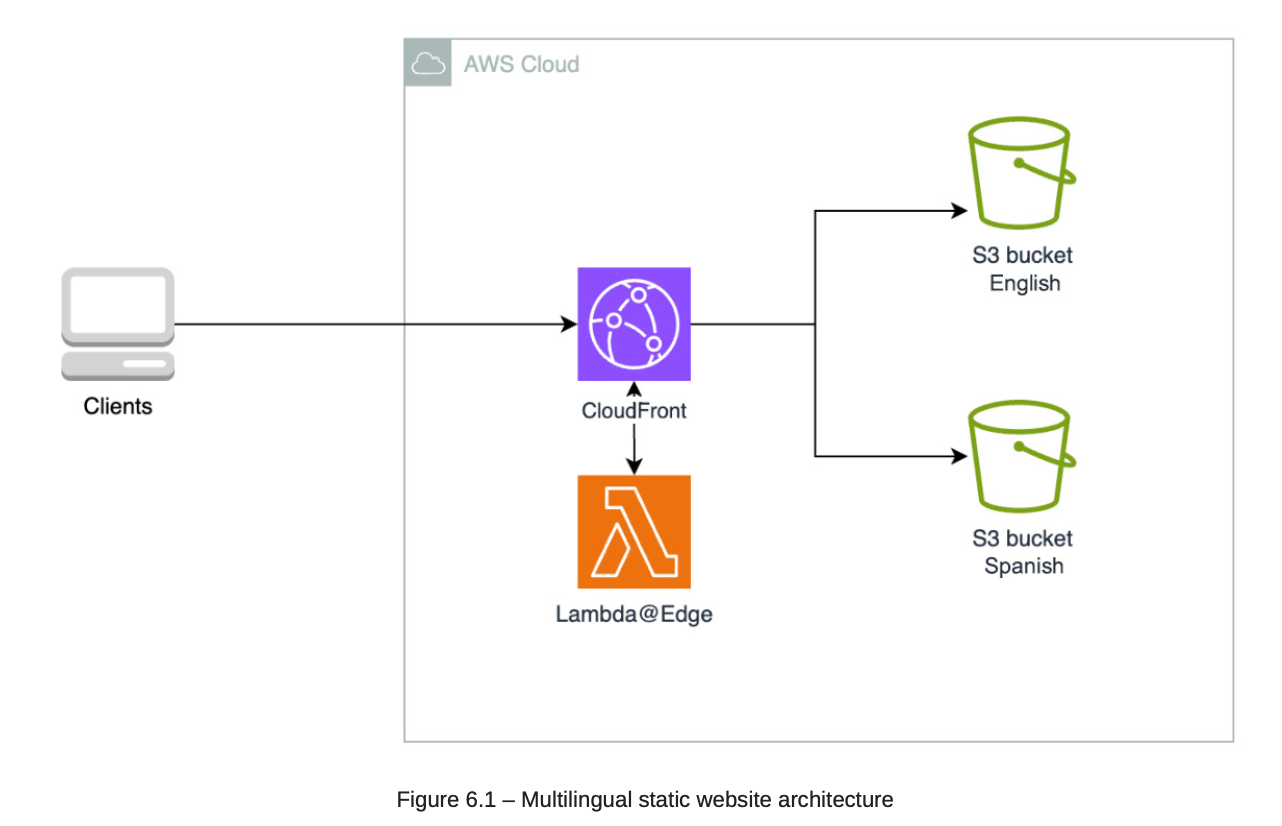
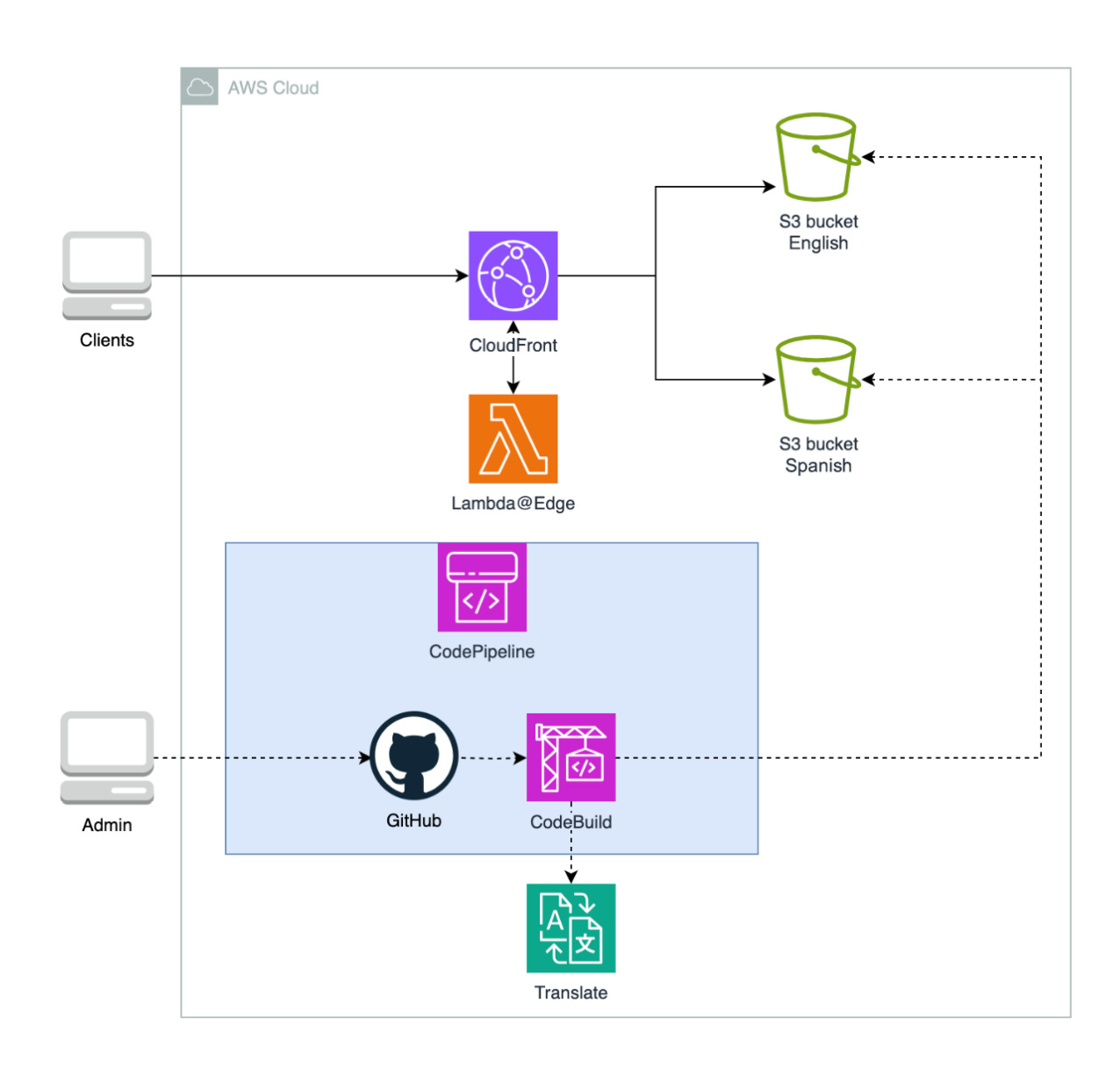
6.2. Choosing services:
-
AWS Translate: Use to translate language.
-
AWS CodePipeline and AWS CodeBuild: Build CI/CD.
7. Implementing a Chatbot Using Machine Learning
7.1. Architecture

-
AWS Cognito come with AWS Gateway -> because it helps the OAuth without implement authenticate service in the BE.
-
AWS Event Bridge: Use when multiple lambda function interact with each others.
8. Building a Business Intelligence Application
8.1. Architecture

8.2. Choosing AWS Services:
-
S3: Store event.
-
AWS Glue: ETL the raw data.
-
Amazon Athena: Using SQL to query data in S3 or log format.
-
AWS Quick Insights: Use to view some visualizations and dashboards.
8. Future Work
8.1. Deploy with ECS
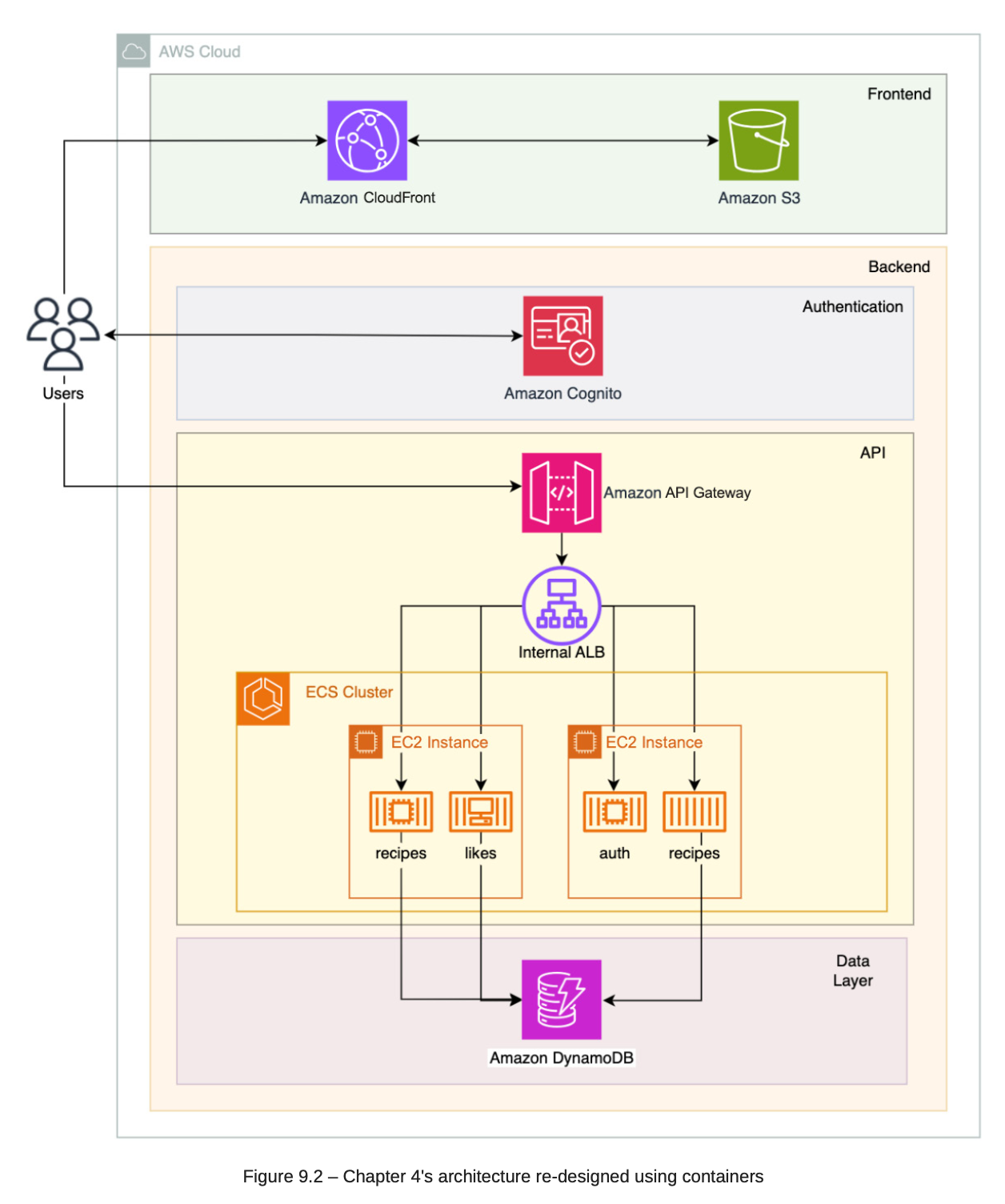
-
ECS to use to deploy docker containers.
-
ECS can run in serverless (Fargate) or EC2 (Virtual Machine).
8.2. API with GraphQL
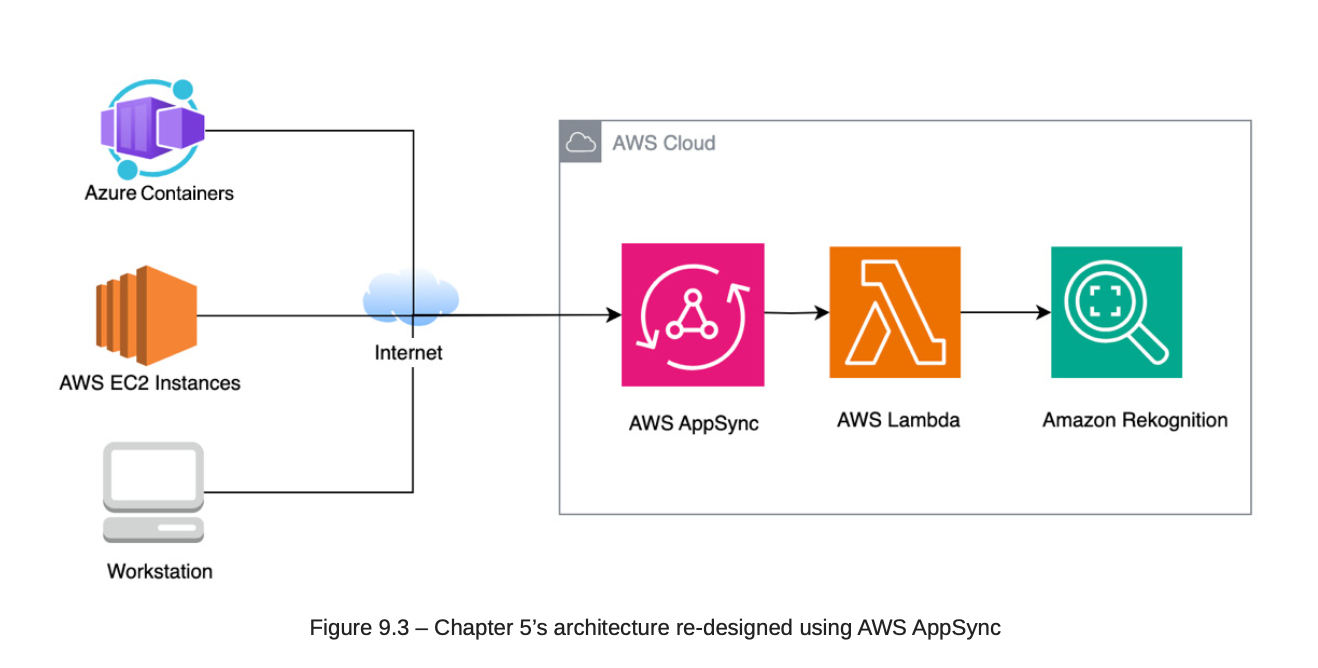
- AWS AppSync: To build API Query with GraphQL
8.3. AWS Genrative AI
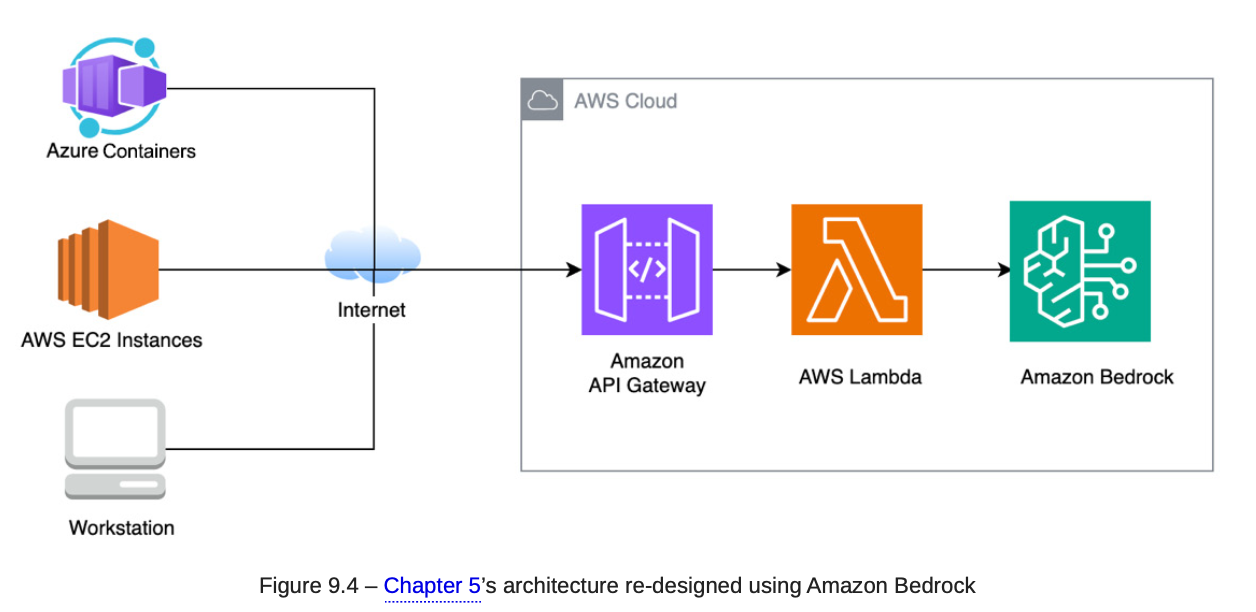
- AWS Bedrock: Use in Generative AI.
8.4. Asynchronus API
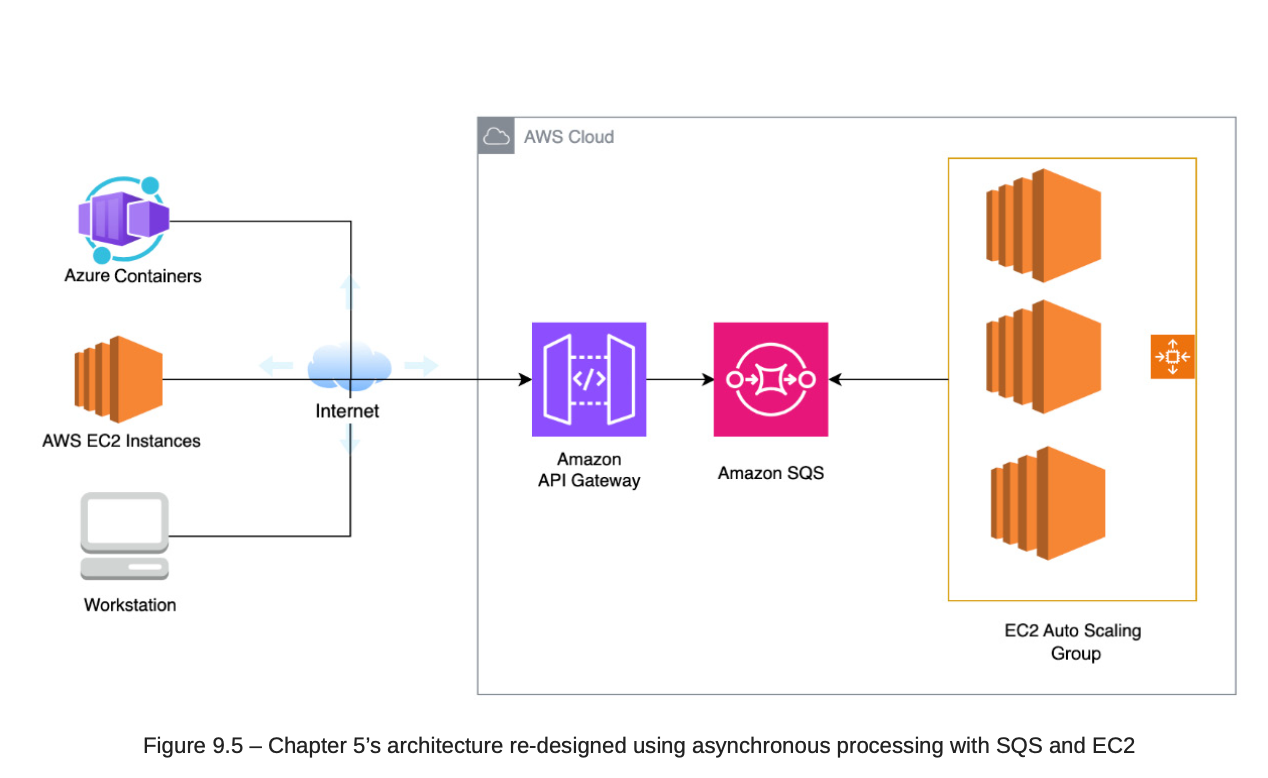
8.5. AWS SNS Fanout
